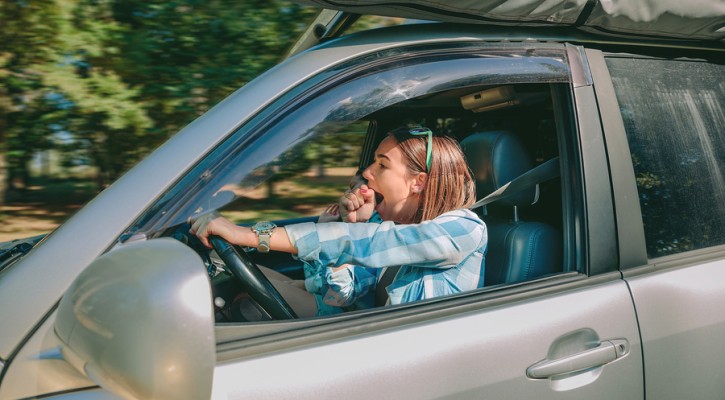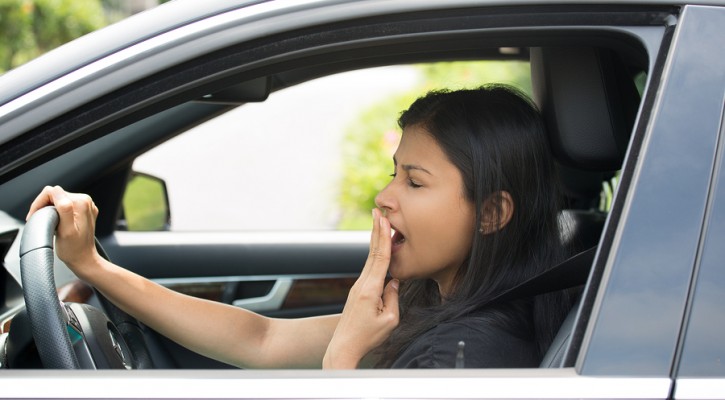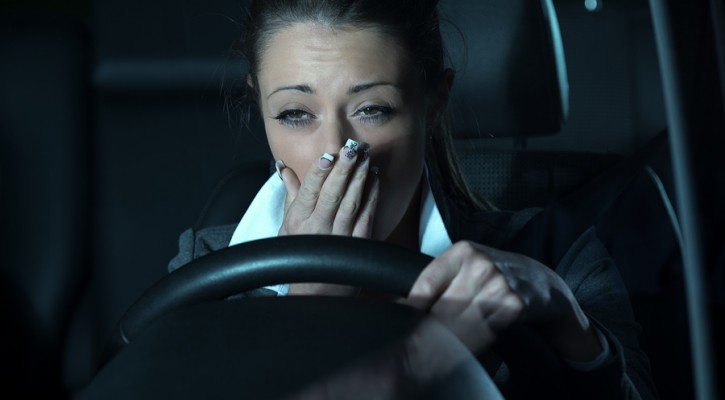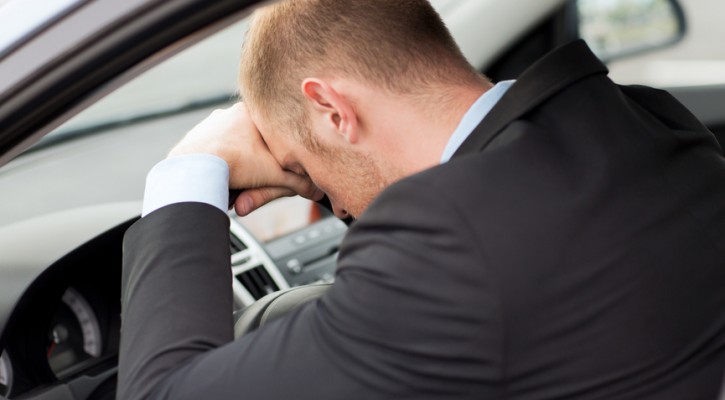Tag Archive: Drowsy driving

Night Shift Workers At High Risk Driving Home
December 29, 2015
Night shift workers are at greater risk of a crash when driving home from work than day shift workers according to new research conducted by Brigham and Women’s (B&W) Hospital in Boston. The study’s results were published this month in the Proceedings of the National Academy of Sciences.
It has long been known that shift workers, especially those whose shifts rotate between day and night are at greater risk for health problems, including heart attacks. The researchers at B&W felt that night shift workers might suffer a greater risk of involvement in a motor vehicle crash because, no matter how long they had worked the night shift, their natural circadian rhythms were disrupted, preventing them from getting adequate sleep.
Driving drowsy is a major problem among American drivers. According to an American Automobile Association (AAA) study published last year, approximately 6,400 people are killed in 328,000 crashes per year due to drowsy driving. According to the AAA study, drowsy driving was responsible for 21 percent of crashes in which a person was killed and 13 percent of crashes in which a person was hospitalized.
To conduct the research, the researchers recruited night shift workers to drive over a two hour period during daytime immediately following their night shift. The same workers were tested again after getting an adequate night’s sleep. The tests were conducted on a closed test track at the Liberty Mutual Research Institute for Safety.
- During the tests conducted after a night shift, track safety observers had to step in and use emergency braking procedures to prevent a crash in 37.5 percent or one-third of the test drives.
- In 43.8 percent of the test drives, safety observers had to halt the drive prematurely because the test subjects were too sleepy to maintain adequate control of their vehicle.
- Episodes of microsleep (nodding off for three or more seconds) increased with each half hour of the drive.
- Instead of making multiple small-scale steering corrections, subjects made infrequent large-scale steering maneuvers to avoid crossing over into other lanes.
- When tests were conducted after subjects had slept all night, there were no emergency braking interventions or test terminations by the safety observers.
Most of the near crashes and inability to maintain control happened after more than 45 minutes into the two hour drive. The researchers realized that that was a long time but noted that many night shift workers routinely commute more than an hour each way to and from work.
The researchers felt that the safest way to resolve the problem is for employers to provide transportation from the workplace to a central area where night shift workers can get public transportation for the remainder of the trip home.
Read more: High drowsy driving crash risk on daytime commute after night work

Hidden Sleep Disorders Can Be Dangerous
August 24, 2015
A new Institute of Medicine report points out the health and safety dangers posed by undetected sleep disorders. According to medical experts, hidden sleep disorders can lead to cardiovascular problems, diabetes, and possibly Alzheimer’s. Especially dangerous are the dangers of industrial accidents and motor vehicle crashes caused by drowsy driving.
Many people in their 50’s to 60’s could be suffering from one or more of these hidden sleep disorders and simply attribute their sleepiness to advancing age. Individuals with sleep disorders may also be in denial because they don’t have any of the risk factors such as alcohol use or smoking.
While driving, lack of sleep can lead to a lack of concentration on the road ahead. In many cases, drowsy driving can cause what is known as a micro-sleep, where the driver nods off for a second or two. A second or two may not seem too bad until you consider that, at highway speeds, a car can travel almost 200 feet in two seconds. A second or two is long enough to drive into another lane or off the road.
A 2014 study by AAA found that drowsy driving was responsible for 21 percent of fatal crashes and the deaths of an average of 6,400 people per year.
Without any obvious symptoms reported by the individuals or spouses, the only way to diagnose these hidden sleep disorders is through a sleep study in a specially designed sleep lab. In these labs, subjects spend the night in a soundproof, totally dark room while their brainwaves, respiration and other signs are monitored by staff in a central control room.
If an obstructive airway is diagnosed as the cause of these sleep disorders, a Continuous Positive Airway Pressure (CPAP) machine is often prescribed. However, many don’t like the idea of sleeping while wearing a mask and hooked by hoses to a noisy machine. For those who resist that idea, there are alternatives such as surgery to open up the airway or an appliance worn inside the mouth that pushes the lower jaw forward.
For others sleep therapy can be as simple as changing lifestyle habits such as watching alcohol intake, staying up too late, or watching TV in the bedroom.
Doctors advise that, if you feel sleepy during your normal wake hours on a regular basis, you may be suffering from one or more of these sleep disorders. The study’s authors advised medical practitioners to consider lack of sleep and question their patients on their sleep habits as part of their routine diagnostic process.
Read more: Snooze Alert: A Sleep Disorder May Be Harming Your Body And Brain

AAA Studies Drowsy Driving
December 3, 2014
More than one-fifth of fatal motor vehicle crashes involved drowsy drivers according to a new study by the American Automobile Association. The study looked at data from a representative sample of 14,268 crashes between 2009 and 2013 and determined that an average of 6,400 people are killed in 328,000 drowsy driving crashes per year.
Among their findings, the study determined that drowsy driving caused:
- 6% of all crashes in which a vehicle was towed from the scene;
- 7% of crashes in which a person received treatment for injuries sustained in the crash;
- 13% of crashes in which a person was hospitalized and;
- 21% of crashes in which a person was killed.
Sleep deprived nation
America is a sleep deprived nation. According to the National Sleep Foundation, 60% of Americans have driven while feeling sleepy and 37% admit to actually having fallen asleep at the wheel in the past year.
A recent National Geographic TV special explained that sleep serves a necessary biological function and serves to clear toxic chemicals from the brain. One toxic substance that is known to be cleared out during sleep is associated with Alzheimer’s disease and it’s thought that not getting enough sleep could lead to the development of Alzheimer’s disease.
According to National Geographic, having a sleep deficit is like having an overdraft at the bank. If you sleep only six hours a night on weeknights and try to make it up by sleeping two extra hours on Saturday, you still have a sleep deficit of eight hours remaining. That has to be paid back somehow and, unfortunately, it’s often paid back behind the wheel.
Getting a full night’s sleep is critical, not only for safe driving but also for our overall health. For tips on getting a full night’s sleep, visit: Sleep tools and tips

Drowsy While Driving? Take A Coffee Nap
September 5, 2014
In past articles on drowsy driving, we’ve advised taking a coffee nap although, to be truthful, we didn’t know, at the time, that they were called coffee naps. Just exactly what is a coffee nap? It’s drinking a cup of coffee (or other caffeinated beverage) and then taking a short nap before the effects of the caffeine kick in. Now, scientists have done the research and found that a coffee nap is better than just drinking coffee or just taking a nap alone.
In comparison studies, the data shows that those who took a coffee nap performed better on memory tests and driving simulators than those who just took naps or just drank coffee alone. They were also able to remain alert for longer periods. Just to make sure it wasn’t just a mind thing, some subjects were given a decaf coffee “placebo” and those “control subjects” failed to perform as well on tests as those who drank the full strength coffee.
To understand the science behind this and to learn how to take the best kind of coffee nap, read more: Scientists agree: Coffee naps are better than coffee or naps alone

Spring Forward Drive To Work Groggy
March 10, 2014
Sleep experts are warning that the spring time shift to Daylight Savings Time will mess with our internal clocks and may lead to drowsy driving. It will take time for our internal body rhythms to adjust to waking in the dark and the late sunsets. Read more: http://www.healthnewsdigest.com/news/Safety_310/Move-to-Daylight-Savings-Increases-Drowsy-Driving.shtml
